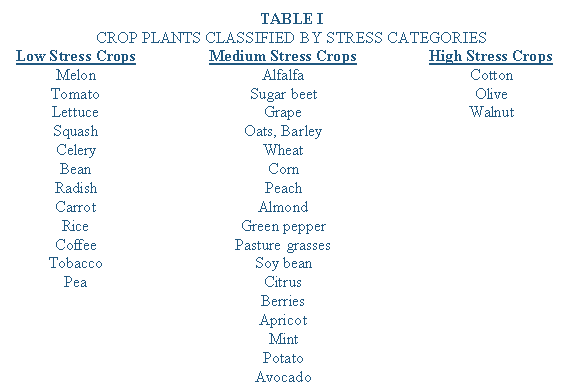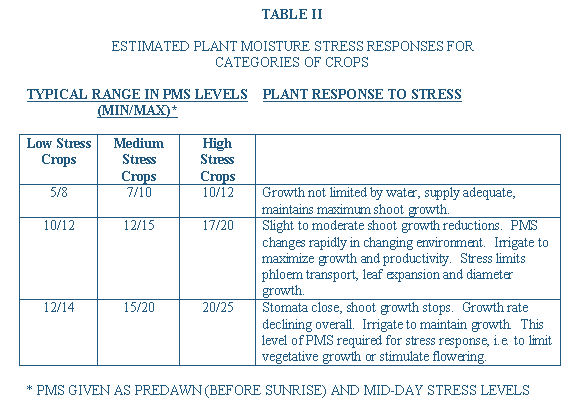 Important Safety Information
Important Safety Information
« Click Here
Considerable research has been done on water relations of agricultural crops. Much of this data has not been compiled or summarized. PMS Instrument Company has attempted to summarize available information for a variety of crops. The striking similarity of the plant responses to moisture stress has led to the development of Tables I and II. Crops were divided into three stress categories, Low, Medium and High Stress Crops (Table I). Table II indicates how plants in each stress category differ in response to PMS (plant moisture stress). This preliminary classification will be further refined as additional information becomes available, but these tables at least provide a starting point for using the pressure chamber to manage crop irrigation. Refinements are available for some crops at this time (i.e., cotton, grapes, avocado) and more will be forthcoming.
Tables I and II (below) have been prepared using both research data and field experiences of growers. We are continuing to collect data on this project and welcome information from all sources

